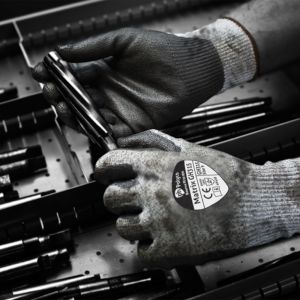Know Your Glove Standards - CE Marking
It is required by law that employers ensure their employees have the right Personal Protective Equipment (PPE) (89/686/CEE) and (93/68/CEE). The CE mark is enforced by the European Community to make sure that all PPE equipment reaches a certain level of safety and is tested effectively across the whole industry.
If gloves are advertising a more complex use, then these tests must be carried out independently to ensure their safety. However, alongside all markings including EN420 and EN455, gloves (or the packaging they are in) must carry a CE mark.
Once this mark is placed on a product, the manufacturer is asserting that he is conforming with all legalities that go hand in hand with CE marking. It ensures that you and your workforce are always protected, as these gloves will be approved to be sold throughout the EEA. With these strict regulations in place, you can make your purchase, confident that gloves with the CE mark will protect your hands.
The CE mark comes in three categories:
• CE Category I
This is for minimal risks, suitable for environments where hazards can be identified before a risk comes into play. These are commonly worn as general purpose gloves for cleaning purposes or protection against temperatures that do not exceed 50°C or more.
• CE Category II
Intermediate risks or sometimes referred to as reversible risks that can be anticipated. Gloves marked with this category will have been tested for properties such as puncture and abrasion resistance.
• CE Category III
These gloves are of complex design for high levels or risk including dealing with dangerous chemicals such as highly corrosive acids. The glove must meet the CE standards, Category II and III products must be certified by an independent notified body before they can be supplied to market. They are to be worn when mortal or irreversible risks are part of the task to be carried out.


Before carrying out any task in future, ensure the gloves available comply and offer the right amount of protection and CE marking.




